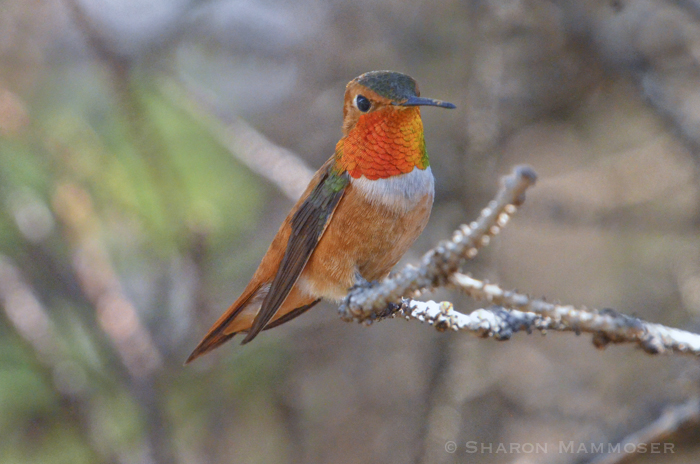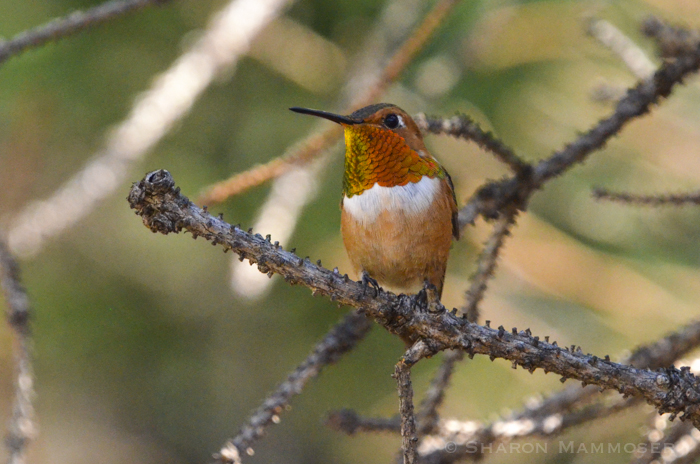If you live west of the Rocky Mountains, you’re likely familiar with the hummingbird from last week’s puzzler–a Rufous Hummingbird, Selasphorus rufus. It is well-named, with its rufous back, that in the sunlight looks like glowing copper. It is the only hummingbird in the United States with a rufous back, though a small amount of Rufous males can have a green back, making them confusing to distinguish from Allen’s Hummingbird. Female and immature Rufous Hummingbirds are just about impossible to distinguish from Allen’s Hummingbirds unless you have one in your hand, as then you can look closely at their tail feathers (Allen’s has narrower tail feathers.)

Rufous hummingbirds, despite their small size at just 2.8- 3.5 inches long, are feisty critters who readily chase off any other bird from a prized nectar source, even when they are only passing through during migration or when there are plenty of appropriate flowers nearby. They are swift and accurate flyers, and in flight their wings make a distinctive sound.
Like other hummingbirds, Rufous Hummingbirds feed on both nectar and insects or invertebrates, sometimes taking them out of spider webs, in mid-air or from the plants themselves.
Rufous Hummingbirds breed as far north as southeastern Alaska, making them the hummingbird with the northern-most breeding range of any hummingbird in the world. Also of note, according to Cornell Lab of Ornithology, “The Rufous Hummingbird makes one of the longest migratory journeys of any bird in the world, as measured by body size. At just over 3 inches long, its roughly 3,900-mile movement (one-way) from Alaska to Mexico is equivalent to 78,470,000 body lengths. In comparison, the 13-inch-long Arctic Tern’s one-way flight of about 11,185 mi is only 51,430,000 body lengths.

If you live east of the Mississippi and see a hummingbird with a rufous back at your feeder in late summer or early fall, it’s most likely a Rufous Hummingbird. Rufous Hummingbirds are the most likely hummingbird, (besides the Ruby-Throated Hummingbird), to be found in southern states along the east coast.
Okay, shall we do another bird as our puzzler? Let’s look a bird that is bigger than a hummingbird and much more widespread.

